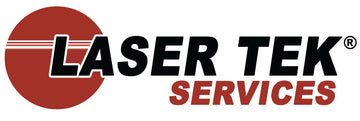A laser printer is a type of digital printing machine that uses laser beams to produce printed output. The precise correlated interaction of the imaging drum, fuser and rollers is responsible for the systematic transfer of image on paper. Electrical potential is applied on each phase of the printing process.
Printing Resolution
Resolution determines the quality of the printouts. The higher the resolution, the better the resultant output. Early models could only deliver on the average 300 dpi (dots per inch), both for horizontal and vertical resolutions. However, recent developments have been really encouraging as resolutions had moved up to the 1200 dpi threshold. OEMs worked at enhancing output resolution which resulted to the tremendous improvement in print quality.
More tips and tricks to printer maintenance and how you can save on printing supplies from the Printer Encyclopedia.
Printing Speed
As printing technologies progressed, print speeds improved tremendously as well. It used to be that only monochrome printers can be expected to deliver the much bruited printing speed. Now even color laser printers can reach the 50 ppm (pages per minute) level. Thanks to the single pass printing technology, laser printing has reached enviable heights in speed.
Printing Technologies
Laser printers employ a laser beam delivered by the scanner assembly to create text and images. The laser scanner assembly delivers the digital image of the document in the form of regularly sequenced dots. The dots are written on the surface of the photosensitive drum.
Basically, the entire printing process will depend on varying electrical charges. As toner is positively charged it will literally cling to the negatively charged dots etched by the scanner. Since paper inherently has a higher negative charge, the formed image simply transfers to the paper surface as it comes in contact with the drum. Thereafter, the image on paper moves into the fuser. Remember the entire printing process occurs at blinding speeds.
Monthly Duty Cycle
Like all printers, laser printers have a monthly duty cycle. It is the mechanical capability of the printer to deliver the printed pages every month without breaking down. Some printers are rated 10,000 while some are programmed with a monthly duty cycle of 300,000 pages.
Consumables
printer consumables
Some of the advantages of using a laser printer is related to cost and value. It uses toner which is much cheaper than ink but promises high quality results. They may also come in monochrome and color using CMYK (cyan, magenta, yellow and black) toners.
Basic Mechanism
printer path
There are 7 stages in the laser printing process. Printing commence once paper goes through the slot. This is followed by image scanning, charging, exposing, developing, transferring, fusing and cleaning.
Image scanning – This is the stage where the image is scanned, resolutions are set (usually at 300dpi) and where other printing requirements needed such as memory are determined.
Charging – The photosensitive drum and belt are charged with electrostatic potential while rotating. At the end of every printing sequence, the residuals of the previous print jobs are cleaned.
Exposing – The stage where the laser beam is directed to a rotating polygonal mirror and lenses. This is to correct image distortion as it is projected into the photoreceptor drum. Here, the image is transformed into negative polarity allowing the positively charged toner to cling securely.
Developing – In line with the contrasting polarity of the negative image formed on the drum and the positively charged toner, adhesion is assured.
Transferring – As it moves towards the drum, paper is charged negatively higher to allow toner to move out of the photoreceptor drum surface and cling to (paper) form the image.
Fusing – The formed image on paper moves towards the fuser. Here, the upper roller is heated at 200 °C (392 °F) which melts the toner to paper while it’s lower roller, grips and applies pressure to the paper. This makes the print permanent. The process is very spontaneous and really quick that overheating and paper burning is not possible.
Cleaning – Once the image is printed, a plastic blade then takes action to remove any excess toner and passes it through the toner waste hopper. However, it is still possible for toner build-up to occur in other parts of the printer. That is why regular maintenance and cleaning is still necessary.
Brief history
It was in 1969 that Gary Starkweather of Xerox invented the first laser printer. However, it took him about a year to finally connect it with a network computer system. The invention was not commercialized until 1976 which was named IBM 3800. Said printer was intended for high-volume printing commonly used for invoices and labels. The said machine was deemed impractical since it took up so much space. It was in 1981 that the first office printer commenced and was launched by Xerox. Although at that time, printers were mostly used in offices and were viewed as a pricey investment. Nowadays, printers are available in economical prices and offer some of the best printing technologies that are a far cry from the earlier inventions.
Reuse empty toner cartridges and save as much as 80% on printing costs. Visit http://www.lasertekservices.com and shop for the toner refill kit compatible with your cartridge.
Milestones
Xerox Star 8010 was the first office laser printer
HP LaserJet was the first printer produced for the mass market. It operated with an 8 ppm print speed and retailed for $3500 back in 1984.
The first color Laser Jet was launched in September 1994. The printer was equipped with print speeds of 2 ppm for color and 10 ppm for monochrome. It also offered a 10 cents cost per page.
Multifunction printers already existed in the late 1980s. These are capable of printing and scanning.
OfficeJet 150 Mobile All-in-One is the first ever mobile portable printer. It was launched in May 2012 by Hewett-Packard.





